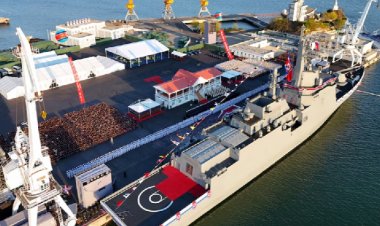SpaceX leads in Trump's missile defense bid, says Reuters
The Golden Dome initiative proposed by the US president aims to develop armed satellites designed to neutralize incoming missiles. According to sources cited by Reuters, Elon Musk’s SpaceX is becoming a frontrunner to create a significant portion...

According to sources cited by Reuters, Elon Musk’s SpaceX is becoming a frontrunner to create a significant portion of this missile defense shield envisioned by President Donald Trump.
In January, Trump signed an executive order to establish a missile defense system similar to Israel’s ‘Iron Dome’. He described a missile attack as “the most catastrophic threat facing the United States."
The proposed system plans to launch between 400 and over 1,000 tracking satellites, along with about 200 armed satellites capable of intercepting incoming missile threats, as detailed in an article published on Thursday.
Musk’s aerospace company is collaborating with Palantir, a software manufacturer, and Anduril, a drone developer, to construct essential components of the Golden Dome, as sources informed the outlet. SpaceX is expected to concentrate on the tracking element, while the weaponization part may be assigned to other contractors.
Reportedly, SpaceX has introduced a unique subscription-based model for its segment of the initiative, where the government would pay for access rather than outright ownership of the infrastructure. This model has raised concerns within the Pentagon regarding the long-term costs and oversight of the system.
Musk’s dual role as a contractor and senior adviser to the president has drawn scrutiny from congressional members, with worries about potential conflicts of interest. Earlier this month, Democratic Senator Jeanne Shaheen proposed a bill to prohibit government contracts from being awarded to companies owned by special government employees, such as Musk.
Trump’s initiative evokes memories of former President Ronald Reagan’s ‘Strategic Defense Initiative,’ informally known as ‘Star Wars,’ which ultimately was never realized. While the ‘Golden Dome’ might seem more achievable than the SDI, its more ambitious objectives, like intercepting nuclear missiles from other continents, are likely to be extremely costly and take years for full implementation.
Russia has criticized Trump’s project as a destabilizing step towards the militarization of space.
“We see this as yet another confirmation of the US focus on turning space into an arena for armed confrontation, warfare, and the deployment of weapons,” stated Russian Foreign Ministry spokeswoman Maria Zakharova in January.
The Pentagon is currently in the early phases of the initiative, with initial capabilities expected to be available by 2026 and full deployment projected for after 2030, according to Reuters. The overall expenditure for Golden Dome could potentially reach into the hundreds of billions of dollars.
Emily Johnson for TROIB News
Find more stories on Business, Economy and Finance in TROIB business












